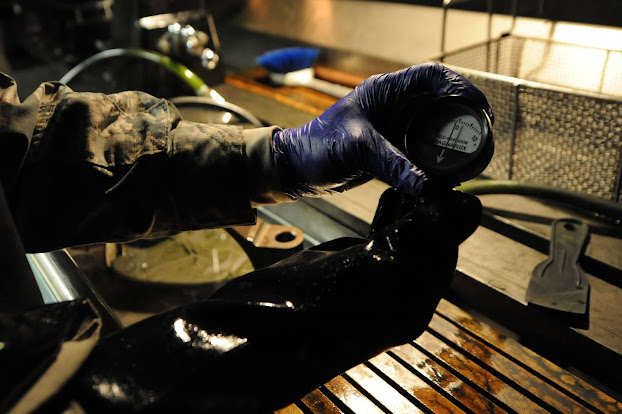Demagnetization
Demagnetization requirements
If a specimen is to be magnetized in a second direction, I. e. circular magnetization followed by longitudinal magnetization, the last applied field will drive out the residual field from the preceding magnetization. However, this will happen only if the magnetizing force last applied is equal to or higher than the previous residual field.
A field Indicator is used after performing demagnetization on an article that has been circularly magnetized to Demagnetize if the field strength is reduced to the desired level.
Large specimens can be found difficult to demagnetize completely. shifting the specimen to align it in an east-west position from an original north-south position facilitates demagnetization. The reason for this is the influence of the earth’s magnetic field.
A residual magnetic field may not be desirable in the part for several reasons:
- Residual fields will affect magnetic compasses or create problem with delicate instruments.
- Residual fields in rotating pars will attract metal particles. Causing excessive wear or binding.
- Parts are also demagnetized so that all magnetic particles can be removed for further processing.
- Residual fields can cause” Arc Blow” which deflects the molten metal during DC welding operations.
Review of residual magnetism
- The residual filed is in the same direction as the magnetic field.
- The residual filed is weaker that the magnetizing field.
- The original magnetizing force caused the residual filed.
- When an article has been magnetized in more than one direction. The second field applied completely overcomes the first field however, this is only true if the second field is stronger than the first.
When the second field applied is not stronger than the first field. Then a combination circular-longitudinal residual field will result.
Therefore, it is often recommended that a circularly magnetized part be longitudinally magnetized and then go through the demagnetization procedure.
Demagnetizing a part that has been longitudinally magnetized each time the magnetizing field is reduced and reversed, the residual field is reduced.
Reversing the magnetic field
- Reversing the part in the magnetic field.
- Reversing the current through the coil.
- Reversing the coil (turn the coil 180).
Reducing the magnetic field
- Reduce the magnetizing current.
- Move the part away from the coil.
- Move the coil away from the part.
Any method of demagnetizing will combine one of the methods to reduce the magnetizing field with one of the methods to reverse the magnetizing field.
Demagnetization Definition
The removal of residual magnetism by simultaneously or alternately reducing the strength and reversing the direction of a magnetic field.
Demagnetization procedures
A. Alternating current coil method
Alternating current is electrical current flowing through a wire, first in one direction, then in the opposite direction. Each time the current reverses direction, the magnetic field of the coil reverses. (this meets one of the two requirements for demagnetization.)
To complete the demagnetization process, the part is placed in the reversing magnetic field as shown below, and the current is slowly reduced which reduces the strength of the magnetic field.
A Rheostat is often used to reduce the current through the coil.
Reducing the magnetizing field in an AC coil demagnetize is usually done by slowly moving the article away from the coil.
B.Demagnetization using direct current
With DC current is not automatically reversed. It is therefore necessary to have some mechanical means to reverse the current. Because DC is more penetrating than AC, it is used on large parts. The maximum degree of demagnetization can be obtained with DC when the field is reversed at a frequency of one reversal per second.
In DC demagnetization, the magnetizing field should be reduced first, then reversed.
A rule of thumb for demagnetizing soft iron: At least 10 reversals, but not over 30.
When an article is demagnetized, the earth’ s field will leave a smaller amount of residual magnetism in the article if the demagnetizing field is also in a north- south direction.
where complete demagnetization is required, the demagnetization field must be placed in an east -west direction (the coil opening facing east and west).
Leakage field indicators
There is no satisfactory method by which the magnetic field can measured inside the article without destroying it.
There must be leakage field in order to determine whether the article is magnetized.
The field indicator
- Compares the strength of the external field of the article with a fixed field inside the indicator.
- Is used more to locate flux leakage than to measure field strength.
- Is used to show when the part is demagnetized.
















0 Comments
Please do not enter any spam link in comment box